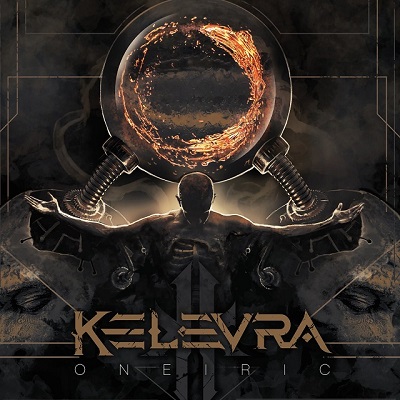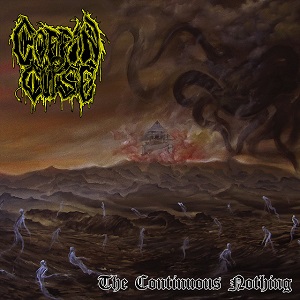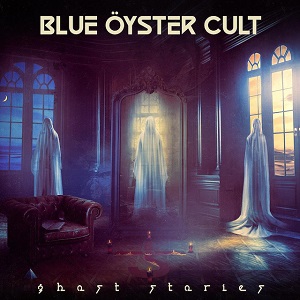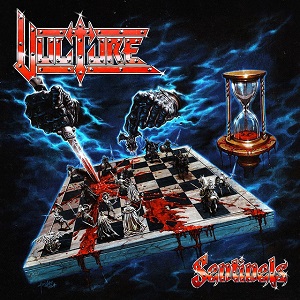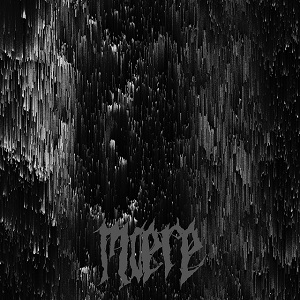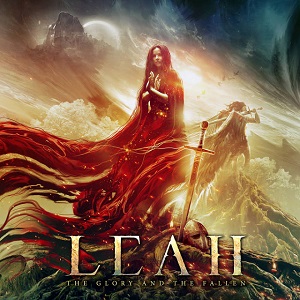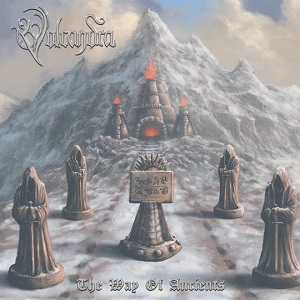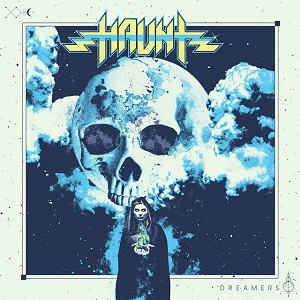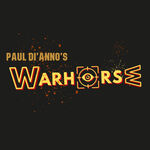THE TEA PARTY – “JIMMY PAGE Was Air-Guitaring To Our Demos”
September 26, 2015, 8 years ago

I guess Tea Party bassist Stuart Chatwood has settled on calling his daunting conundrum of a band variations upon world music mixed with rock music.
But I’m gonna describe this national treasure of ours in a way that will actually sound more flattering than that, and actually help non-knowers understand what this great, under-rated band does: picture an album twice as good as the superlative Page Plant album, Walking Into Clarksdale, splash liberally with the cream of Robert Plant’s catalogue, say The Principle of Moments or Fate of Nations. And then, well, I suppose this means the same thing, but if Led Zeppelin had been twice as smart, talented, imaginative, past those great blueprint songs in the ‘70s, and were doing the same sort of material in the ‘90s and 2000s (gotta skip the ‘80s—they would have pooched it like most ‘70s bands)... then what you would get would be The Tea Party.
And the record to represent that? That would be the band’s (de facto, proper) second album, The Edges of Twilight, which is being played in its entirety now by the reunited band, in honour of its 20th birthday.
Oh yes, and adding that their front man, Jeff Martin, looks, sings, and thinks like Jim Morrison... well, that’s gas onto the fire, largely considered a trite accusation, but, yep, that’s kind of the bonus.
So let’s recap... The Tea Party: Led Zeppelin, 2000, with Jim Morrison not dead, but fronting The Tea Party. With Robert Plant so crucially part of the presence, as writer, Moroccan inspiration, I dunno... second guitarist, let’s say. But he’s gotta be there, because The Tea Party = all of Led Zeppelin. Plus Jim Morrison. Plus Nick Drake.
“It’s probably our most momentous record, I guess, of our career,” begins Chatwood, on The Edges of Twilight, “because it broke us in a few territories around the world. For example, in Australia, I think the record was in the Top 20 for 18 weeks, so it really solidified the band’s following all over the world and solidified our sound. On our first record, we explored the path that led us to sort of world music and rock music together, but we didn’t really have the funds or the know-how to take it to the next level until The Edges of Twilight, where we actually purchased... I think there were 31 different instruments on that record. So every day, there was a FedEx or UPS truck arriving, either at our studio or rehearsal space, and it was just a box, a surprise every day (laughs). And it was just out of the frying pan into the fire, because before we ourselves were that basic guitar/bass/drums paradigm, that most bands existed by at the time.”
“And I think it alienated us with some fans, because some people were quite comfortable with us being guitar, bass, and drums,” reflects Stuart. “And we got accused of, I don’t know, co-opting world music culture, and just having a false pretence behind it all. But for us, the attitude was, let’s not limit ourselves to our influences from North America. Our attitude was, let’s not limit ourselves to Western culture, much like the Beatles—Ravi Shankar, George Harrison—the Rolling Stones, and even “Kashmir,” Led Zeppelin. We were taking ourselves to different places other than just straight-ahead rock.”
“We weren’t trying to copy anyone per se, but we did listen to a lot of Led Zeppelin and a lot of Beatles and a lot of Stones—and a lot of Dead Can Dance stuff, actually. There’s a lot of influence from Dead Can Dance on that record, because actually, one of their big records, Towards the Within, we were listening to that record a lot on the road, prior to going into the studio. And there’s a lot of the influences that Led Zeppelin had, including Bert Jansch, a lot of the English folk guitarists that Jimmy Page was influenced by. You know, at the time we were touring with Roy Harper, so we couldn’t avoid it (laughs). Like we were hanging out with Roy and jamming on the acoustic guitars. I think, actually, “Fire in the Head” was started acoustically, jamming with Roy Harper.”
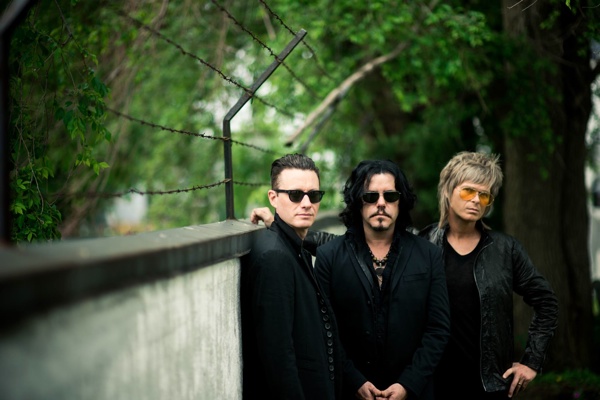
And then Jimbo met Jimmy.
“When we did eventually play with Page and Plant, at The Forum at Montreal,” recalls Chatwood, “it was at the end of the tour, unfortunately, and I remember Jimmy put his arm around Jeff and it was like, ‘Where were you guys earlier in the tour? We would’ve had you for the whole tour.’ And you know, we spent the night drinking and chatting with those guys. Jeff went to Jimmy’s house in London, and right before Transmission came out, actually, he was playing Jimmy the demos of the Transmission record, and it was funny, Jimmy Page was air-guitaring to our demos (laughs). At the time, Jeff was looking at his wife, just saying, can you believe this? (laughs). My hero’s getting into my demos.”
And Robert? What was his reaction?
“Well, he actually watched the whole show in Montreal. He set up a tea service for himself right in front of me, and Jimmy Page, actually, watched in front of Jeff, and after the show, Robert went down song by song, how he loved this, and the drums in this song, and the scales that we were working off. Because Robert is a huge fan of, you know, just Morocco. I think he goes to Marrakesh a lot himself. But our final song was a blues song, and he said, ‘I loved everything except the last one. You know, I think the blues has been covered a lot. It’s territory that you guys should avoid’ (laughs). So it was cool to have an insight into every one of the songs.”
Broken up for a five year spell there, The Tea Party are looking to continue their fearless musical exploits into next year and beyond. The Ocean at the End was issued in 2014, and as Stuart frames it, “it’s maybe an encapsulation of all our prior work. I don’t want to say we are influenced by our prior stuff, but you have to be aware of your prior stuff so don’t repeat yourself, I guess, right? So, it’s definitely, world music, rock music, folk music—all of that stuff is involved.”
It’s no surprise this band that builds huge, complicated studio masterpieces wants to do more records: “Well, that’s what we do. I mean, a lot of bands don’t see the point of recording new material. But it’s half of our existence. We love playing live, but we love creating new things. And, thankfully, we almost have like a Deadhead following. People are very open in our camp for new songs. I think, come February, we’ll probably be committing some stuff to tape. Plus we still have to tour Australia for The Edges of Twilight first.”
And a highlight of the present tour, no doubt, is “The Bazaar,” second loud rocker after opening Edges of Twilight track “Fire in the Head” which is also heavy on the near metal pedal.
“Well, I’ll tell you one story about The Bazaar, actually,” laughs Stuart, in closing. “It’s a little off-topic, but our guitar tech is from Australia. He was in Istanbul, I think with Nick Cave or one of the acts he tours with. And he wandered into The Grand Bazaar to buy some rock ‘n’ roll rings from a vendor there. There’s 3000 little stalls in this Grand Bazaar in Istanbul, and the guy looked at our tech, and he said, ‘Oh, are you a rock star?’ And the guy said, ‘No, no, no, but I work with rock bands.’ And he says, ‘Oh, what kind of music?’ And the guy said, ‘Well, it’s kind of like, world music—and Led Zeppelin.’ And the guy said, ‘Oh, like The Tea Party? “The Bazaar?”’ (laughs). And then he started singing ‘The Bazaar;’ like he knew the song. We shot part of the video there, but we shot the video in like 1995. Just for him to remember that... it’s an easy reminder of how far this music will travel, and how it can affect people around the world.”

